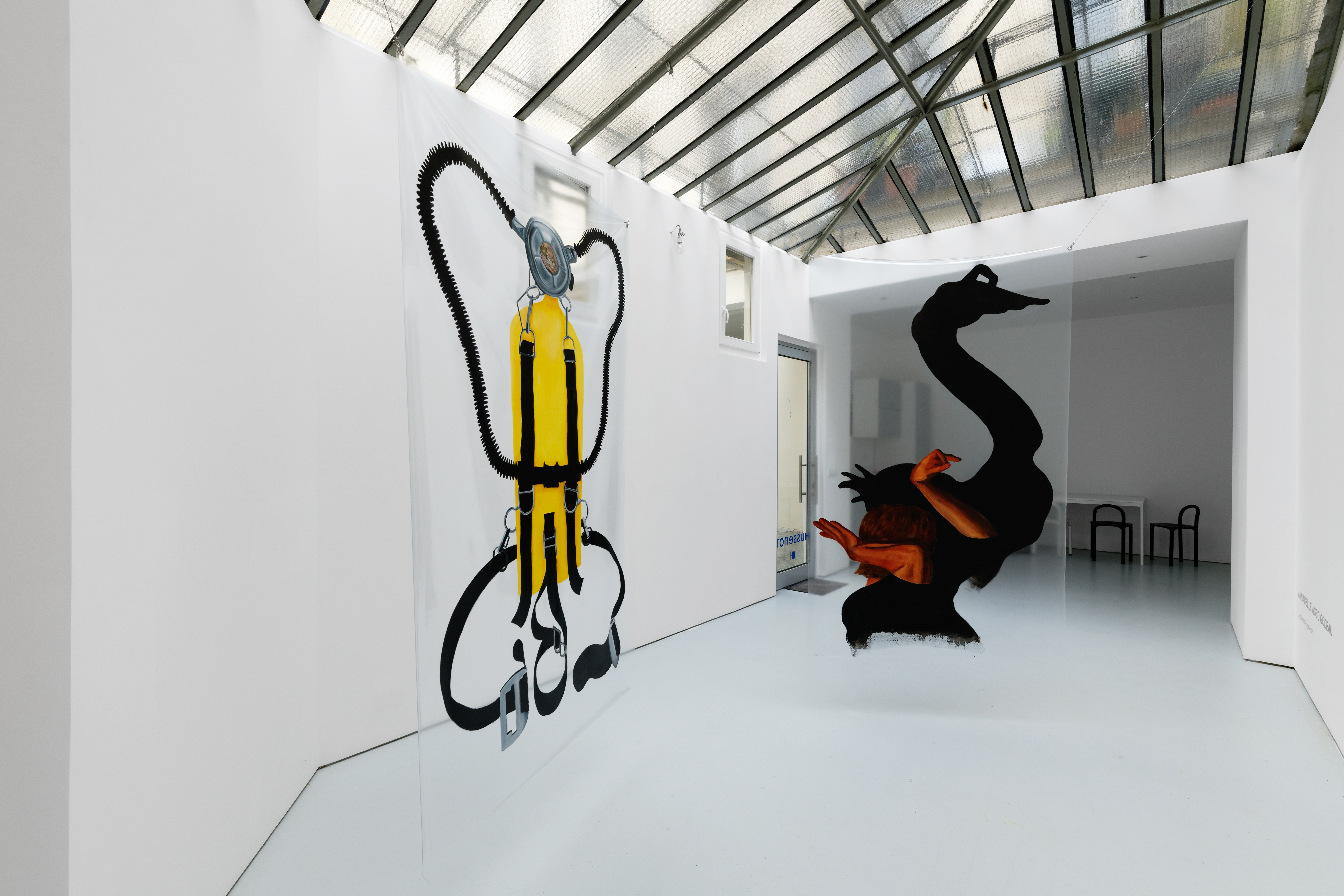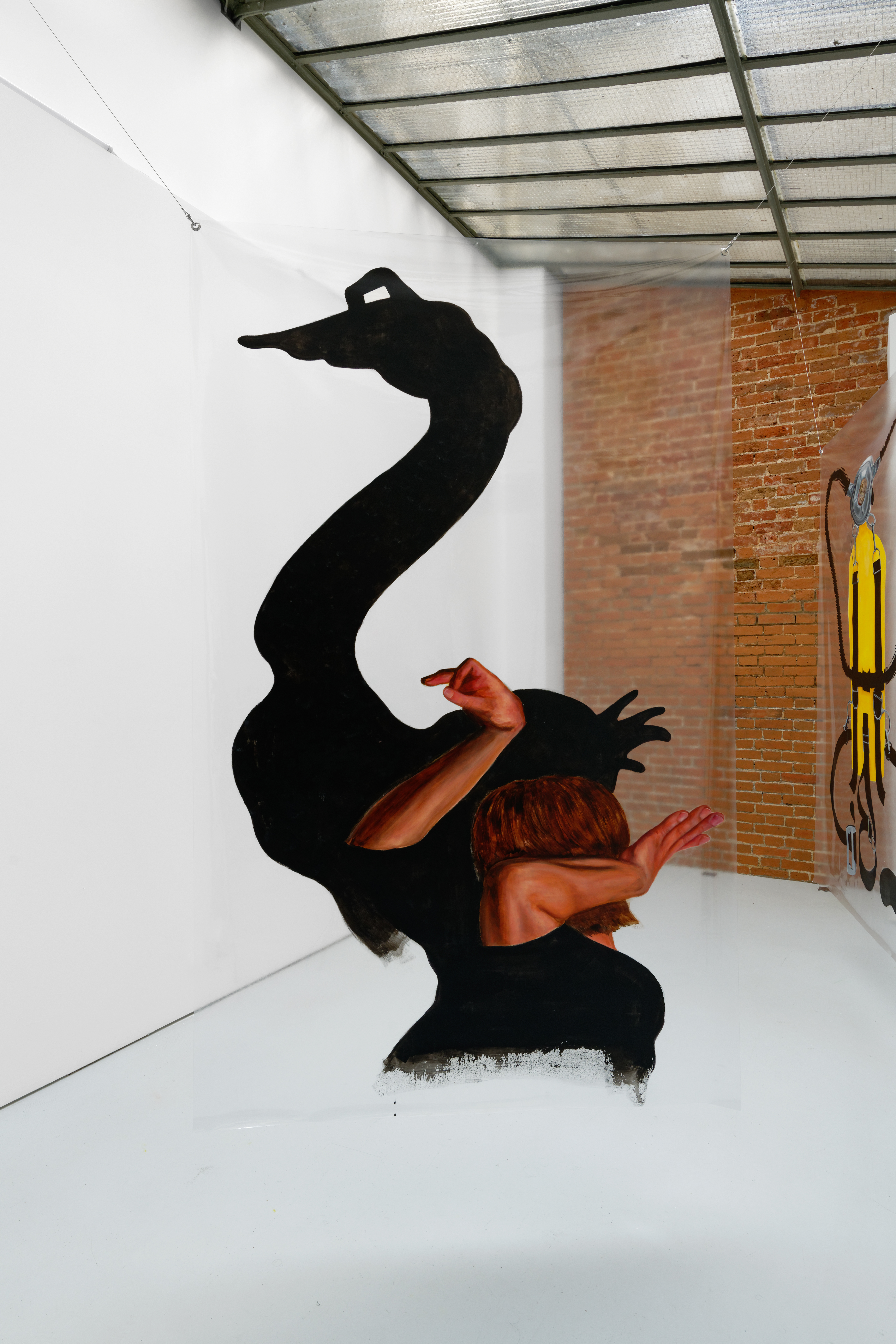La théorie du cygne noir
Galerie Hussot - La cuisine, Paris
03.12 - 14.01.2023
![]()
![]()
![]()
Container (1), Oil on PVC, 200x130cm
![]()
![]()
Container (2), Oil on PVC, 200x130cm
![]()
Ziegfeld, Oil on canvas, 22x14cm
La théorie du cygne noir, développée par Nissam Taleb, s’applique à un événement
hautement improbable, défini par trois caractéristiques principales : Il
est imprévisible ; il a un impact important et ce n’est qu’après son avènement que
l’on tente de lui apposer une explication qui le rationalise.
« Before the discovery of Australia, people in the Old World were convinced that all
swans were white, an unassailable belief as it seemed completely confirmed
by empirical evidence. The sighting of the first black swan might have been an
interesting surprise for a few ornithologists (and others extremely concerned with the
coloring of birds), but that is not where the significance of the story lies. It
illustrates a severe limitation to our learning from observations or experience and
the fragility of our knowledge. One single observation can invalidate a general
statement derived from millennia of confirmatory sightings of millions of white
swans. All you need is one single (and, I am told, quite ugly) black bird.»1
Les oeuvres présentées dans La théorie du cygne noir proposent deux
scénarios ambigus. Sont représentés ici un objet et un geste a priori ordinaires qui se
métamorphosent à travers le geste pictural. Certaines parties de l’appareil de plongée
prennent un aspect calligraphique, d’autres se muent en formes anatomiques. De
manière similaire, l’ombre chinoise du cygne dépasse son initiateur pour prendre une
vie propre et dérouter le regard.
1 Nissam Taleb, The Black Swan : The Impact of the Highly Improbable, 2007





